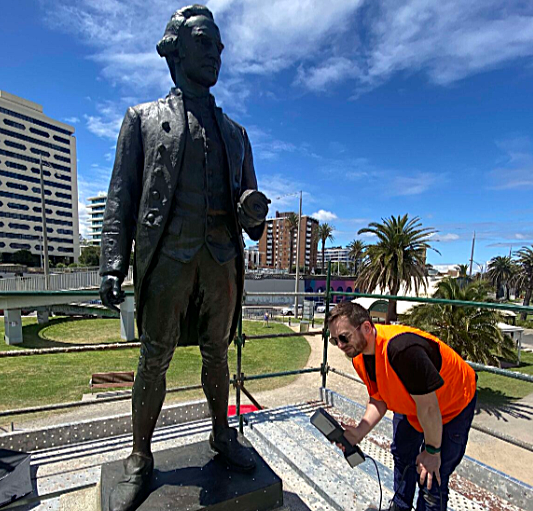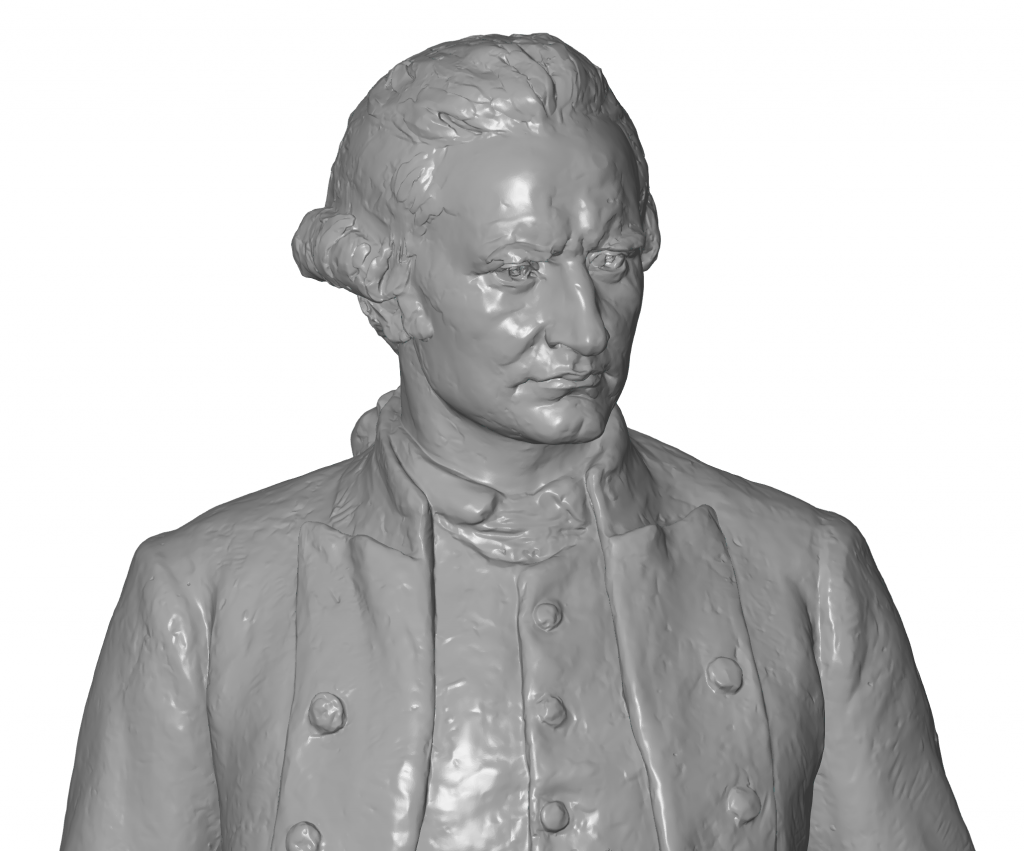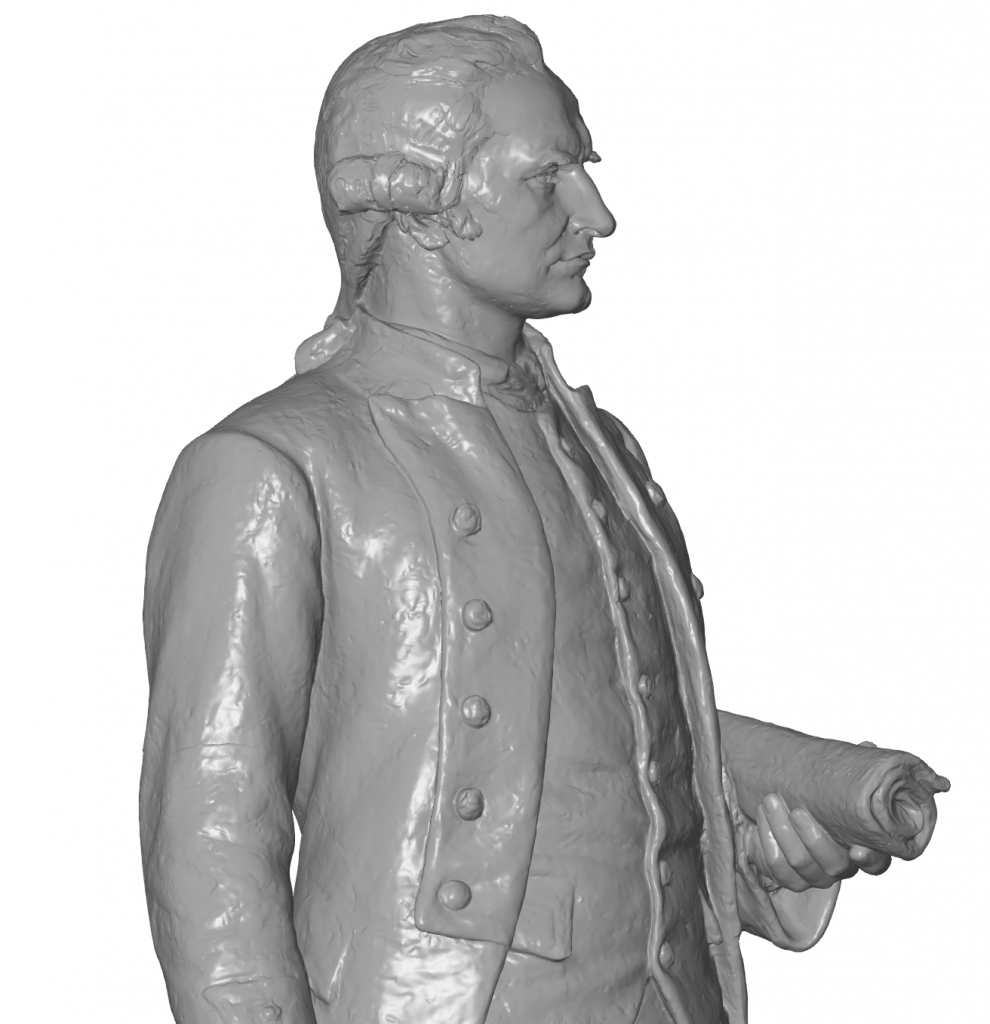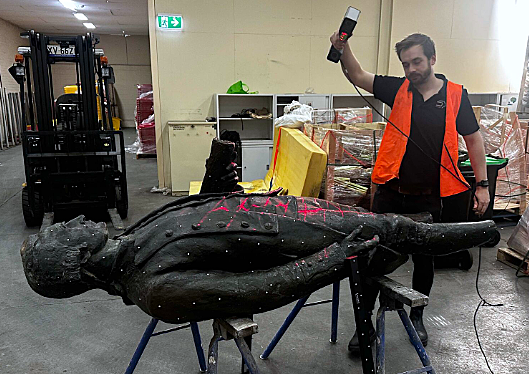Preserving cultural heritage using 3D scanning
The statue of Captain James Cook has been a key feature in the landscape of the City of Port Phillip since 1914. It still symbolizes an important chapter of Australia’s colonial history. However, time has also left its mark on the statue, so that restoration work had to be carried out on the monument recently. A digital 3D model was essential in order to archive these and to be able to use them for future adjustments to the statue. To achieve the highest precision and level of detail, the City of Port Phillip and Meridian Sculpture teamed up with our Australian partner Scan-Xpress.
For this outdoor project, our partner’s application team used the ZEISS T-SCAN hawk 2 – a hand-held 3D scanner that is perfect for on-site scanning. Its powerful lasers ensure seamless scanning workflows and precise data, regardless of the surface to be scanned. Reflective and dark parts can be measured just as easily as intricate details. The result with the 3D laser scanner is impressive: features of the statue, facial expressions and even the texture of its clothing become visible in the digital 3D model.
3D scanning made easy with ZEISS T-SCAN hawk 2
Looking for more in-depth information on
ZEISS T-SCAN hawk 2? Hit the button below and experience everything the hand-held 3D laser scanner has to offer.

Receiving insightful digital 3D models in the ZEISS INSPECT software
Besides receiving and archival-quality record of the statue, having a digital 3D model of historical monuments allows for virtual exhibitions, educational work or even future restoration work. Having the complete digital twin not only makes cultural heritage available for future generations but also proves the relevance of modern 3D scanning technology in the preservation of history.


